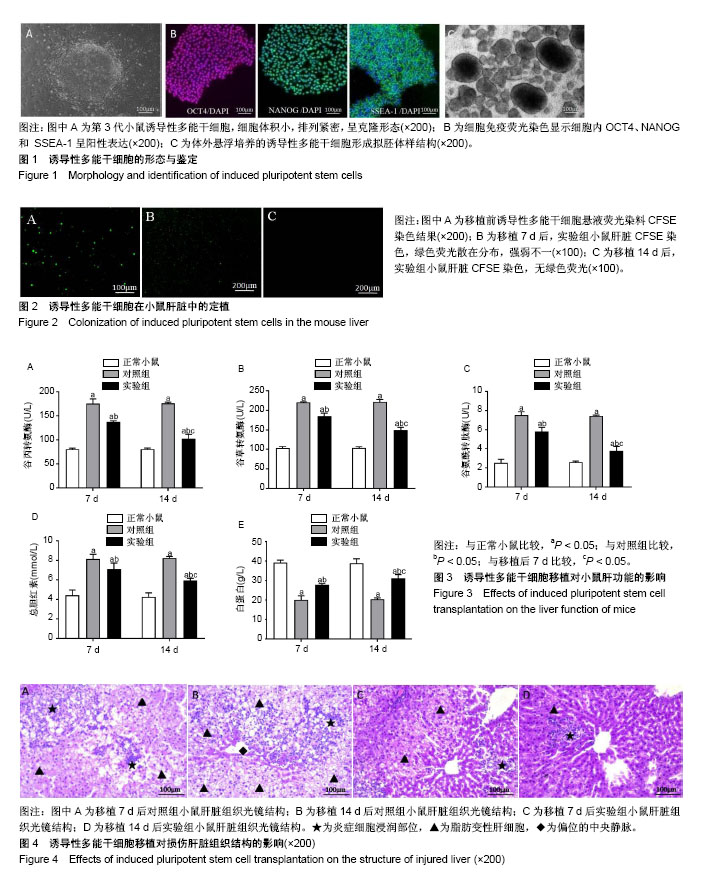| [1] Schlabe S, van Bremen K, Aldabbagh S, et al. Hepatitis B virus subgenotype F3 reactivation with vaccine escape mutations: A case report and review of the literature. World J Hepatol. 2018;10(7): 509-516. [2] Bhatia M, Gupta E, Choudhary MC, et al. Evaluation of impact of occult hepatitis B infection in chronic HCV-infected patients: A retrospective cohort study. J Lab Physicians. 2018;10(3):304-308.[3] Lanini S, Pisapia R, Capobianchi MR, et al. Global epidemiology of viral hepatitis and national needs for complete control. Expert Rev Anti Infect Ther. 2018;16(8):625-639.[4] Jiang XW, Ye JZ, Li YT, et al. Hepatitis B reactivation in patients receiving direct-acting antiviral therapy or interferon-based therapy for hepatitis C: A systematic review and meta-analysis. World J Gastroenterol. 2018;24(28):3181-3191.[5] 闫成,薛改,吴丽颖,等. 两种肝组织匀浆上清液诱导人脐带间充质干细胞向肝细胞分化的比较[J]. 中国组织工程研究, 2015,19(19): 2993-2998.[6] 袁淑芳,胡兰英,姜涛,等. 骨髓间充质干细胞移植肝衰竭大鼠CD163和白细胞介素10的表达[J]. 中国组织工程研究, 2014,18(6):919-925.[7] 赵文秀,张磊,刘建明,等. 小鼠脂肪间充质干细胞的分离培养及其在肝内归巢[J]. 南方医科大学学报,2013,33(8):1151-1154.[8] 丛姗,白立恒,李岩,等. 人羊膜间充质干细胞移植对CCl4诱导的小鼠损伤肝HGF、SIRT-1、α-SMA及P~(27kip1)表达的影响[J]. 中国生物化学与分子生物学报,2015,31(3): 292-300.[9] 王建军,赵平,靳雪源,等. 诱导性多能干细胞治疗小鼠肝损伤的初步研究[J]. 中国肝脏病杂志(电子版),2016,8(2): 39-43.[10] 吴玉卓,杨乐,翟玉峰,等. 自体骨髓间充质干细胞治疗乙型肝炎失代偿期患者:肝纤维化、肝功能、MELD评分及1年生存率分析[J]. 中国组织工程研究,2017,21(13):2049-2055.[11] 任浩,董静,刘力伟,等. 人脐带间充质干细胞治疗乙型肝炎肝硬化患者发生肝细胞癌的危险因素分析[J]. 中国组织工程研究, 2018,22(9): 1350-1356. [12] Pocock JM, Piers TM. Modelling microglial function with induced pluripotent stem cells: an update. Nat Rev Neurosci. 2018;19(8): 445-452.[13] 张雪,明雅南,张岚. 诱导性多能干细胞的安全性及其在肝细胞再生方面的应用潜能[J].肝脏,2016,21(5): 404-407.[14] Roy-Chowdhury N, Wang X, Guha C, et al. Hepatocyte-like cells derived from induced pluripotent stem cells. Hepatol Int. 2017; 11(1):54-69.[15] Pournasr B, Duncan SA. Modeling Inborn Errors of Hepatic Metabolism Using Induced Pluripotent Stem Cells. Arterioscler Thromb Vasc Biol. 2017;37(11):1994-1999.[16] 李君,杜潇,吴嫣爽,等. 不同分化阶段诱导性多能干细胞移植实验研究进展[J].解剖学报,2015,46(5):699-703.[17] Revill P, Yuan Z. New insights into how HBV manipulates the innate immune response to establish acute and persistent infection. Antivir Ther. 2013;18(1):1-15.[18] Chang RH, Nyamsuren T, Gyawali S, et al. Long-term Nucleos(t)ides Analogues for Chronic Hepatitis B Improve Liver and Spleen Size: A Noninvasive Sonographic Study. J Med Ultrasound. 2017;25(3):161-166.[19] Raven S, Urbanus A, de Gee A, et al. Predictors of hepatitis B vaccination completion among people who use drugs participating in a national program of targeted vaccination. Vaccine. 2018; 36(35):5282-5287.[20] Liu D, Liu L, Wang L, et al. Therapeutic effects of mesenchymal stem cells combined with short hairpin RNA on liver injury induced by hepatitis B virus infection. Mol Med Rep. 2018;17(1):1731-1741.[21] Berenguer M, de la Rosa Rodríguez G, Domínguez-Gil B. Significant impact of new oral therapies against HCV on the waiting list for liver transplantation in Spain. J Hepatol. 2018; 69(4):966-968.[22] Zheng WP, Zhang BY, Shen ZY, et al. Biological effects of bone marrow mesenchymal stem cells on hepatitis B virus in vitro. Mol Med Rep. 2017;15(5):2551-2559.[23] Qu M, Yuan X, Liu D, et al. Bone Marrow-Derived Mesenchymal Stem Cells Attenuate Immune-Mediated Liver Injury and Compromise Virus Control During Acute Hepatitis B Virus Infection in Mice. Stem Cells Dev. 2017;26(11):818-827.[24] Lou C, Bai T, Bi LW, et al. Negative impact of hepatitis B surface seroclearance on prognosis of hepatitis B-related primary liver cancer. World J Clin Cases. 2018;6(8):192-199.[25] Tseng CH, Chang CY, Mo LR, et al. Acoustic Radiation Force Impulse Elastography with APRI and FIB-4 to Identify Significant Liver Fibrosis in Chronic Hepatitis B Patients. Ann Hepatol. 2018; 17(5):789-794.[26] Singh K, Evens H, Nair N, et al. Efficient In Vivo Liver-Directed Gene Editing Using CRISPR/Cas9. Mol Ther. 2018;26(5): 1241-1254.[27] Aravalli RN, Steer CJ. Gene editing technology as an approach to the treatment of liver diseases. Expert Opin Biol Ther. 2016;16(5): 595-608.[28] Sukowati CH, El-Khobar KE, Ie SI, et al. Significance of hepatitis virus infection in the oncogenic initiation of hepatocellular carcinoma. World J Gastroenterol. 2016;22(4):1497-1512.[29] Terai S, Takami T, Yamamoto N, et al. Status and prospects of liver cirrhosis treatment by using bone marrow-derived cells and mesenchymal cells. Tissue Eng Part B Rev. 2014;20(3):206-210.[30] Li YH, Xu Y, Wu HM, et al. Umbilical Cord-Derived Mesenchymal Stem Cell Transplantation in Hepatitis B Virus Related Acute-on- Chronic Liver Failure Treated with Plasma Exchange and Entecavir: a 24-Month Prospective Study. Stem Cell Rev. 2016; 12(6):645-653. |
.jpg)

.jpg)